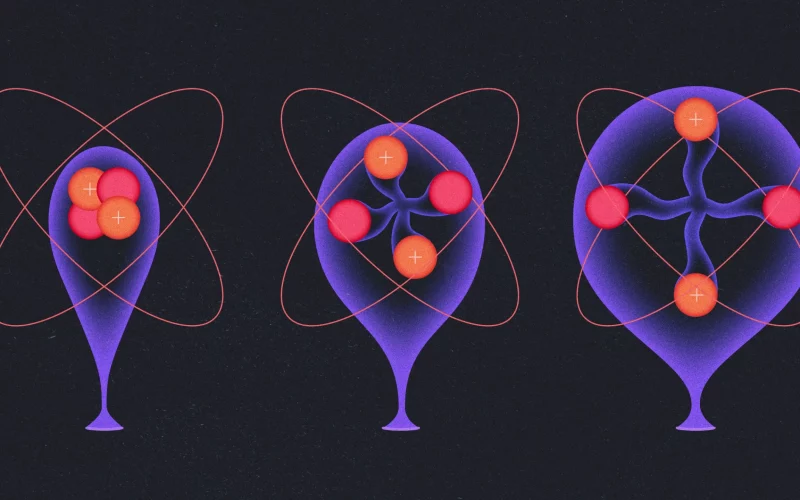Nuclear physics is a fascinating field that delves into the heart of matter, exploring the intricate workings of atomic nuclei and the powerful forces that bind them together. It’s a journey that takes us from the fundamental building blocks of nature to the boundless potential of nuclear energy. Let’s embark on this journey together, as we unravel the mysteries of the atom and discover how it shapes our world.
Understanding the Atom
At the core of nuclear physics lies the atom, the basic unit of matter. Within the atom, we find a dense nucleus surrounded by a cloud of electrons orbiting at varying distances. This structure forms the foundation of all matter in the universe, from the smallest particles to the largest stars.
Evolution of Nuclear Physics
The study of nuclear physics has evolved over centuries, driven by curiosity and technological advancement. From the early experiments with radioactivity to the development of quantum mechanics, each discovery has deepened our understanding of the atom and its behavior.
Atomic Structure
The nucleus of an atom contains protons and neutrons, which are held together by the strong nuclear force. Surrounding the nucleus are electrons, which occupy distinct energy levels or orbitals. This structure determines the chemical properties of an element and its interactions with other substances.
Subatomic Particles
Nuclear physics also explores the properties and interactions of subatomic particles, such as quarks and leptons. These particles play crucial roles in processes like radioactive decay and nuclear reactions, shaping the behavior of matter on both the microscopic and cosmic scales.
Nuclear Forces

The forces that govern interactions within atomic nuclei are among the strongest in nature. Understanding these nuclear forces is essential for harnessing nuclear energy and unlocking the potential of fusion as a sustainable power source.
Harnessing Nuclear Energy
One of the most significant applications of nuclear physics is the generation of nuclear energy through processes like fission and fusion. By splitting or combining atomic nuclei, we can release vast amounts of energy that can be converted into electricity and other forms of power.
Fission and Fusion
Nuclear fission involves splitting heavy atomic nuclei into lighter fragments, releasing energy in the process. This is the principle behind nuclear reactors and atomic bombs. Fusion, on the other hand, involves merging lighter nuclei to form heavier ones, releasing even greater amounts of energy.
Nuclear Reactors
Nuclear reactors use controlled fission reactions to produce heat, which is then converted into electricity. These reactors play a vital role in many countries’ energy portfolios, providing a reliable source of low-carbon power.
Power Generation
The use of nuclear energy offers several advantages, including high energy density, minimal greenhouse gas emissions, and continuous power generation. However, it also poses challenges related to safety, waste management, and proliferation risks.
Applications of Nuclear Physics
Beyond power generation, nuclear physics finds applications in various fields, including medicine, industry, and scientific research.
Medicine
In medicine, nuclear techniques are used for diagnostic imaging, cancer treatment, and sterilization of medical equipment. Radioisotopes are employed to trace biological processes and detect diseases with unparalleled precision.
Industry
In industry, nuclear technologies are used for materials testing, food irradiation, and quality control. They enable processes like radiography and neutron activation analysis, enhancing product safety and efficiency.
Research
In scientific research, nuclear physics drives advances in fields like astrophysics, particle physics, and materials science. Facilities like particle accelerators and nuclear laboratories provide tools for exploring the fundamental laws of nature and developing new technologies.
Environmental Impact and Safety Measures
While nuclear energy offers significant benefits, it also raises concerns about environmental impact and safety.
Nuclear Waste Management
The disposal of nuclear waste remains a major challenge, as it requires long-term storage and containment to prevent environmental contamination. Research continues into safe and sustainable waste management solutions, including reprocessing and deep geological disposal.
Safety Protocols
To ensure the safe operation of nuclear facilities, stringent safety protocols are enforced, covering design, construction, operation, and decommissioning. These measures include redundant safety systems, regular inspections, and emergency preparedness.
Future Prospects and Innovations
Looking ahead, nuclear physics holds promise for addressing global energy needs and combating climate change through innovative technologies and research initiatives.
Advanced Reactor Designs
Next-generation reactor designs aim to improve safety, efficiency, and sustainability by employing novel fuel cycles, cooling systems, and materials. These reactors offer potential solutions to existing challenges and pave the way for a new era of nuclear power.
Nuclear Fusion Projects
Research into nuclear fusion continues to progress, with projects like ITER and NIF aiming to achieve sustained fusion reactions and demonstrate the feasibility of fusion power. If successful, fusion could provide a virtually limitless source of clean energy with minimal environmental impact.
Sustainable Energy Solutions
As concerns about climate change grow, nuclear energy is increasingly viewed as a viable option for reducing carbon emissions and transitioning to a sustainable energy future. By investing in nuclear technology and innovation, we can address the dual challenges of energy security and environmental sustainability.
Ethical and Societal Considerations
Alongside technological advancements, nuclear physics raises ethical and societal questions that must be carefully considered.
Public Perception
Public perception of nuclear energy varies widely, influenced by factors like safety concerns, environmental risks, and historical events like nuclear accidents and weapons testing. Building trust and transparency is essential for fostering informed debate and decision-making.
Policy and Regulation
Effective policy and regulation are crucial for ensuring the safe and responsible use of nuclear technology. Governments and international organizations play key roles in setting standards, monitoring compliance, and mitigating risks associated with nuclear energy.
Conclusion
In conclusion, nuclear physics offers a fascinating journey into the heart of matter, from the inner workings of the atom to the vast potential of nuclear energy. By harnessing the power of the atom responsibly and innovatively, we can address pressing global challenges and build a sustainable future for generations to come.
FAQs
1. Is nuclear energy safe?
Nuclear energy can be safe when stringent safety protocols are followed, but accidents like Chernobyl and Fukushima highlight the importance of robust regulation and oversight.
2. What happens to nuclear waste?
Nuclear waste is typically stored in secure facilities, either temporarily or permanently, using techniques like reprocessing and deep geological disposal.
3. How does nuclear fusion differ from nuclear fission?
Nuclear fusion involves combining lightweight atomic nuclei to release energy, whereas nuclear fission involves splitting heavy atomic nuclei.
4. What are the environmental benefits of nuclear energy?
Nuclear energy produces minimal greenhouse gas emissions compared to fossil fuels, making it a potentially important tool for combating climate change.
5. What are the challenges facing nuclear fusion research?
Nuclear fusion research faces challenges related to achieving sustained fusion reactions, controlling plasma instabilities, and developing efficient energy capture methods.









